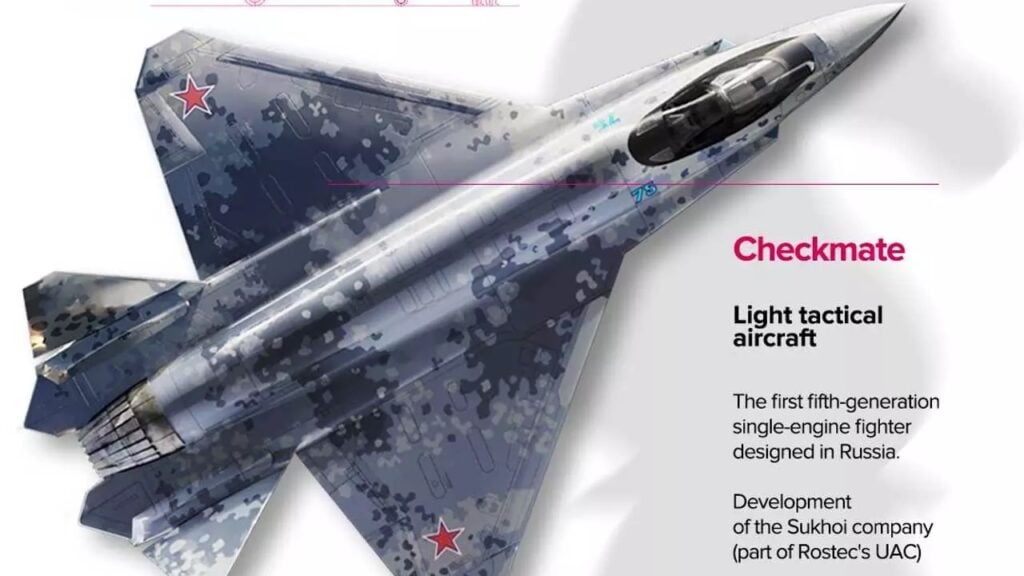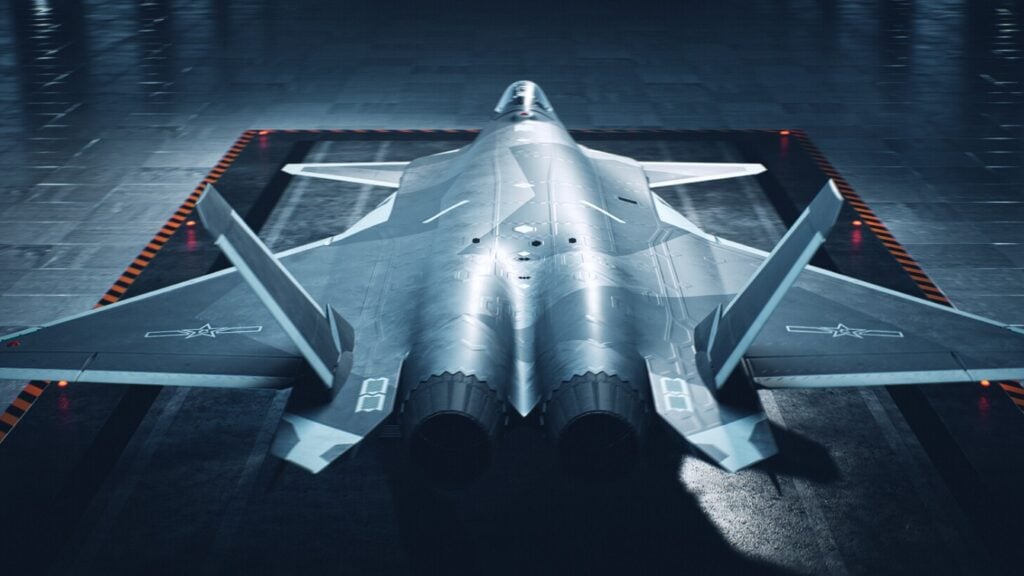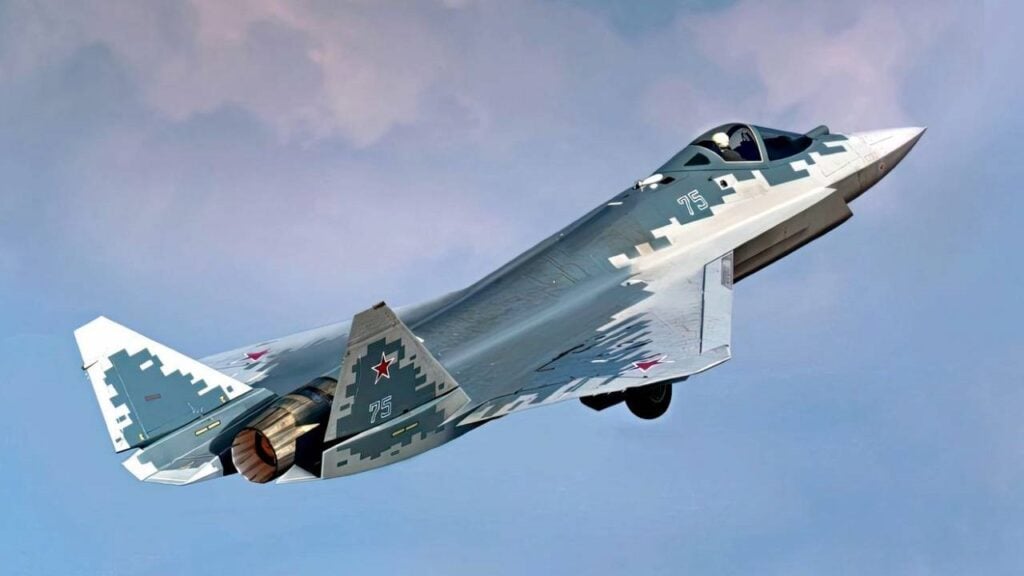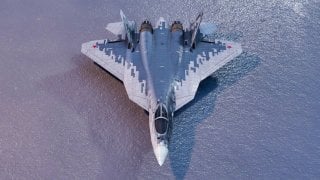Russia's Su-75 Checkmate: The Stealth Fighter No Air Force Wants
The Russian Sukhoi Su-75 "Checkmate" stealth fighter, unveiled with significant anticipation at the MAKS 2021 Air Show, has struggled to attract international buyers.
Summary: The Russian Sukhoi Su-75 "Checkmate" stealth fighter, unveiled with significant anticipation at the MAKS 2021 Air Show, has struggled to attract international buyers. Positioned as a cost-effective alternative to the F-35 and Chinese J-20, priced between $25 million to $30 million per unit, the Su-75 offers advanced avionics and stealth capabilities. Despite these features, it has failed to secure significant interest or orders, with potential markets like the UAE and India remaining hesitant.

-This lack of enthusiasm is part of a broader decline in Russian arms exports, exacerbated by the impact of the Ukraine conflict on Russia's global standing. Moreover, sanctions have hindered Russia's ability to procure essential components like semiconductors, impacting its production capabilities.
-The Su-75 was hoped to be an export success, projecting sales of 300 units over 15 years, but this target now appears overly optimistic given current challenges.
Russia's Su-75 Stealth Fighter: High Hopes, Disappointing Outcomes
Russia is struggling to find buyers for its Sukhoi Su-75 “Checkmate” stealth fighter. Billed as a low-cost alternative to the Lockheed Martin F-35 Lightning II, the Su-75 has failed to impress international buyers or to dissuade clients from buying American.
Failing to Attract Buyers
Unveiled at the MAKS 2021 Air Show, the Su-75 is advertised as a fifth-generation stealth fighter. Designed around one engine as a light tactical fighter, the Su-75 vaunts lower operational costs despite carrying advanced avionics and weapons. It thus presents itself as cost-effective and is designed to be highly attractive on the export market.
The Su-75 was launched with great fanfare. Russian President Vladimir Putin was even in attendance as Western journalists jostled to get a closer look. The Su-75 earned aviation headlines and alerted Western observers to Russian plans to compete on the export market. But in the three years since the Su-75’s big unveiling, it has gained little notice. Despite costing significantly less than alternatives like the F-35 or the Chinese Chengdu J-20, at $25 million to $30 million per unit, the Su-75 has not gained much relevance.

“Despite its high-profile unveiling…Russia’s Su-75 Checkmate stealth fighter is facing headwinds in attracting international partners and competing in the global defense market,” Army Recognition reported. “Countries like the UAE and India have not eagerly partnered in the program, indicating limited success for Moscow’s new military aircraft in the international arena.”
The Su-75’s failure speaks to a general decline in Moscow’s ability to sell weaponry abroad. Russia recently ceded its long-held number two position in global arms sales to France. The shift is likely related to “negative repercussions of the ongoing conflict in Ukraine on Russia’s reputation.”
Russia had hoped the Su-75’s primary export clients would be Argentina, the UAE, India, and Vietnam. Russia also courted potential buyers in Africa and South America. Initially, the hope had been that Russia could export 300 Su-75s in 15 years, but that projection is beginning to look overly optimistic.
Not only has it been unable to export the plane – Russia now might be struggling simply to produce enough Su-75s. Sanctions resulting from its war in Ukraine have restricted Russia’s ability to import semiconductors, which are fundamental to developing the computers that run modern aircraft.
Designing the Su-75
The Su-75 features an internal weapons bay, a diverterless inlet, and V-shaped “ruddervators.” These ruddervators are especially distinct: Whereas most airframes feature vertical rudders to control yaw and horizontal elevators to control pitch, the Su-75 has combined both into a single flight surface. The V-shaped ruddervators should help reduce the jet’s radar cross section.

The Su-75’s wings have a distinctly large surface area. This is meant to provide extra lift and better maneuverability, improving combat performance in the thin air at altitudes above 40,000 feet.
The single Izdeliye 30 engine is expected to help the Su-75 achieve top speeds around Mach 1.8, with a range of 3,000 kilometers. The internal weapons bay should be able to hold 7,400 kilograms of ordnance.
About the Author: Harrison Kass
Harrison Kass is a defense and national security writer with over 1,300 total pieces on issues involving global affairs. An attorney, pilot, guitarist, and minor pro hockey player, Harrison joined the US Air Force as a Pilot Trainee but was medically discharged. Harrison holds a BA from Lake Forest College, a JD from the University of Oregon, and an MA from New York University. Harrison listens to Dokken.


